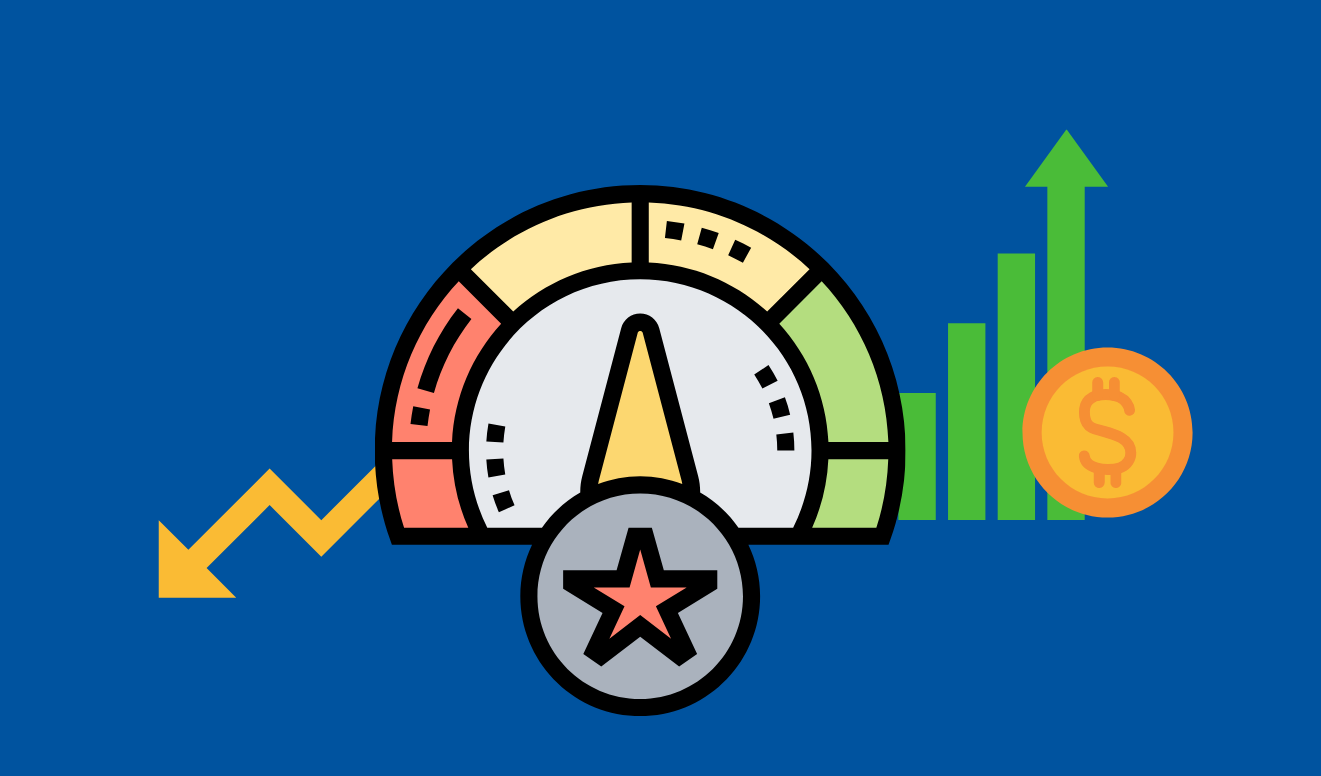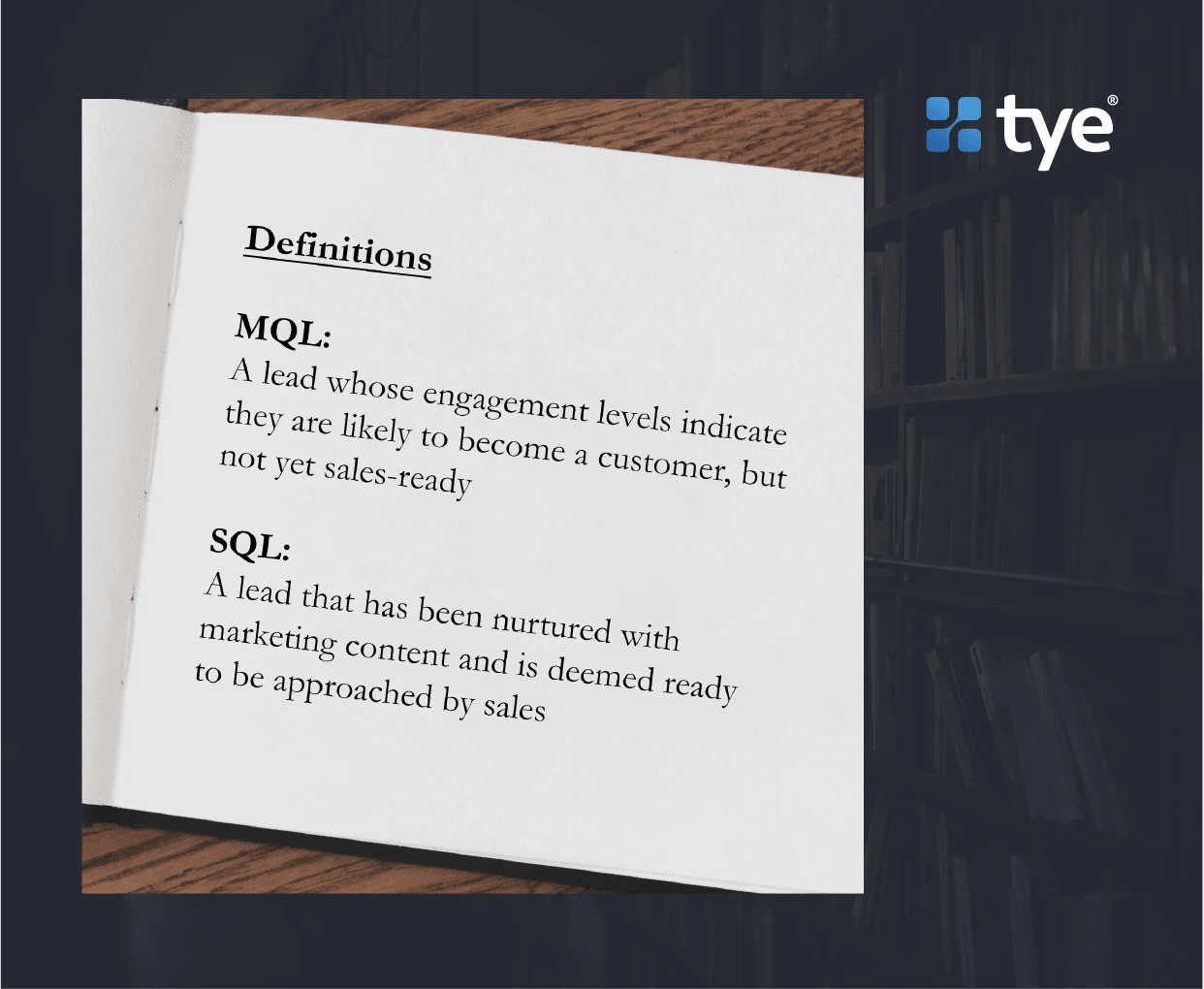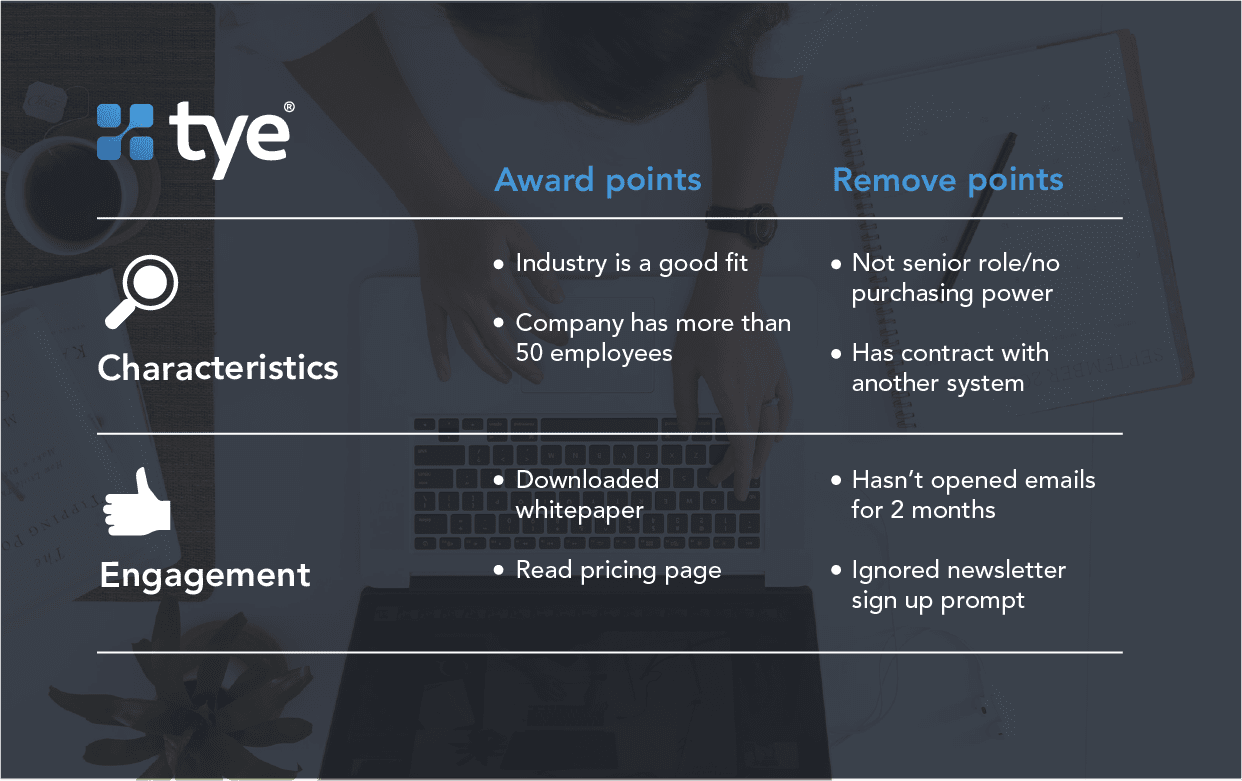26 Elements To Include In An Effective Lead Scoring Model

An effective marketing automation workflow relies on good data, promising leads, and a lead scoring model that makes your sales team happy. Read our guide on how to create one that really works.
A large data set doesn't mean your leads won't be arbitrary. Do you know the difference between your good leads and your bad ones?
This article will help you:
- Get your data into good shape
- Understand how your data can inform your sales approach
- Define a lead scoring matrix that takes leads from arbitrary to aligned with sales
-Get 26 ideas for ways you can score your leads for better sales
What is lead scoring?
It’s a commonly used exercise by marketers and salespeople that helps them focus on their leads that are most likely to convert. In a report by Spear Marketing, it was revealed that 68% of marketers use lead scoring or qualifying to move prospects along the sales funnel.
Lead scoring is an effective method of email list management. It helps you to create qualifiers for your leads so that you know when they are ready to be moved down your sales funnel. Their score is what decides they are no longer a Marketing Qualified Lead (an MQL) and can be considered a Sales Qualified Lead (an SQL).

Why is lead scoring important
Having a leading scoring model means that moving your leads through this process can be done more effectively, enabling you to send your sales team engaged and relevant SQLs.
What is a lead scoring model?
A lead scoring model allows you to assign your leads with points based on their characteristics and actions. It means that your marketing automation tool can identify which are more likely to be sales-ready with a uniform approach.
The higher the point score, the more likely they are to be sales ready. You can assign certain actions or qualities with plus or negative points over a period of time. This allows you to determine how ready they are to be sent in the sales team’s direction.
Lead scoring model example

How to create lead scoring models
Creating your own lead scoring system should be specific to your business. The ways in which your customers interact with you is unique to your business and your sales process. Here’s how to create one that works for you:
Make sure your customer data is clean
First things first. Your sales and marketing efforts are a waste of time if your data isn’t in good shape. Poor data means less profitable campaigns. In fact, most companies lose 12% of revenue from bad data. While bad data inhibits your ability to segment and target effectively, a well-managed email list can produce an ROI of 3,800%!
If you have an existing list, chances are, the data is outdated and could use some tidying. Incorrect data gets in the way of building relationships and maximizing the power of your email list. You need to prioritize email hygiene now.
First step: sort this out. Especially if your business strategy relies on automation.
Use a data quality tool to understand what kind of condition your contact data is in. It can identify what percentage of your data is clean, accurate, and usable, and if the data can be trusted.
Clean your email list with this 15-point email hygiene checklist
Setting up your lead scoring matrix
Armed with clean data, you can now start to review your list and work out how to best use the data you have in order to segment your lists. Your lists probably contain the following types of data:
Contact demographic
Contact firmographic
Job title
Company information
Contact’s email engagement
Contact’s website behavior
You might have more types of data, such as a contact’s social media engagement, or even webinar engagement, if you run them.
Take time to understand how your data fits into these categories and how you might find it useful when preparing to score your leads.
All of this will help you put together a lead scoring model that works for your sales approach. The goal is to provide your sales team with the most relevant information. That way, they know whether to continue lead nurturing or to follow up with the inbound lead.
What kind of data matters most in your lead scoring model?
When it comes to using your data to create an effective lead scoring model, you need to identify the differences between your ‘behavioral data’ and ‘demographic data’. Referring to the data types already mentioned, a contact’s demographic and their company information would be considered their demographic data. Whereas their engagement with your email, website, and any other content is behavioral data.
We wrote a guide on how to get started with behavioral email marketing, how you can use it, and examples you can put into practice.
This graph from a report by Spear shows confirms that this approach is favored by most marketing and sales professionals.

In order to get an accurate picture of how to utilize this data to build a lead scoring model, you need to talk to both your existing customers and your sales team. Here’s what you need to find out:
Talk to your customers
Talking to your customers is a useful exercise in creating an ideal client profile. By digging into your existing engaged clients, you can build a picture of who your future customers might be.
This will inform you of what’s important when it comes to creating a lead scoring model and how you might assign points to various demographic or engagement records.
Here are some ideas for questions to ask:
Their role: where does this person sit within their company structure, what skills and experience do they need to do this, what are their day-to-day tasks?
The company: what is the company size, revenue and position within the industry?
The industry: what challenges is the company facing in the wider industry, what challenges are they facing within their role?
The future: What are their goals for the next year, or the next five years?
Research: How do they search for information? What do they do when looking for a new tool or service?
Purchasing decisions: What informs their purchasing decisions? Who has the final say and what does a procurement process look like?
Talk to your sales team
Once you’ve understood what makes your customers tick, work with sales to turn that into a lead scoring model. Ask them which demographic or engagement qualifiers make them most sales-ready, and which are a sign that they aren’t? Which kind of leads have the longest lifecycle?
Start by creating a list of all of the ways you track a contact's engagement, and all the data you have on a contact’s demographic. It might look something like this:
Engagement
Downloaded content
Shared content
Viewed homepage
Viewed product page
Viewed pricing page
Returned after X days
Viewed a landing page
Interacted with chat
Registered for a webinar
Attended a webinar
Asked a question during the webinar
Viewed recording
Shared recording
Opened email
Opened x emails
Clicked link in email
Didn’t open email in x days
Didn’t click any links
Demographic
Industry fit
Size of company
Job Role
Seniority/decision-making power
Time in role
Time engaged with marketing
Budget
Existing contracts with competing vendors
The list isn’t exhaustive and can be altered and tweaked depending on the ways in which you communicate with your audience, and which demographic points are collected and deemed important by sales.
How to calculate a lead’s score
Not all lead score models are created equal. There are a few ways of approaching this that you should consider:

Manual Lead Scoring
A manually created lead scoring model is created by you. It’s driven by the research you’ve done in the stages above, and allows you to be very specific about which data matters.
It also allows you to pick up on specific trends that you’ve noticed. For example, you may have spotted that leads that download a certain piece of content are more likely to convert, so you can rate this more highly.
Once your list is complete, work through it to assign a score to each action. What’s important is that you establish a maximum score, and identify what number they need to reach to become sales-ready.
This requires each engagement or demographic record to be assigned a number of points based on how much this says about your contact’s eagerness to convert. For example, you might assign someone 5 points for visiting your product page, but 20 points for attending and engaging with a webinar.
However, there are other types of lead scoring that lets your marketing automation tool do the work.
Lead scoring through marketing automation
Logistic regression lead scoring
A logistic regression lead scoring model is a more complex and mathematically backed method. This involves building a formula based on probability of conversion based on previous actions and demographic information. It’s a more accurate way of pin-pointing the qualities and engagements that lead to closing a customer.
Working with a lead scoring algorithm
Predictive lead scoring
A predictive lead scoring model uses an algorithm to assess the data in your CRM to determine how sales-ready your MQLs are.
Typically it reviews data in your CRM or marketing automation tool with Artificial Intelligence (AI) as well as outside data to develop insight on trends or actions that lead to a higher probability of converting. The information it provides you is based solely on the analytics and facts, so you can eliminate any personal biases that may find their way into a manual method.
This approach is a more sophisticated way of sifting through your data, and works well when you’re dealing with lots of data and lots of leads. It does the hard work for you when you are dealing with large lists, and a manual lead scoring model isn’t time-effective enough.
The most important thing to consider is your list health. For the AI to work, the data in your lists must be well maintained and clean, or you risk errors arising with a predictive lead scoring method and could end up chasing unprofitable leads.
Recommended lead scoring tools
Hubspot, the marketing automation platform, has a powerful predictive lead scoring tool that is able to tap into data from across all of your marketing efforts.
What next?
So you’ve worked through your data and identified a lead scoring model that works for your business, but the work’s not over.
To ensure you’re always getting the most effective results from a lead scoring model, your data needs to stay clean. Regular data cleaning exercises means you know the data you’re putting into your lead scoring model will yield the best results.
Data cleaning is often considered to be a long, arduous and sometimes expensive task, but it doesn’t have to be. Data quality tools can alleviate some of the pain points of cleaning data from you.
Still not sure? Check out this post on 10 things you need to know about email list hygiene
Finally, without understanding the sales process and your clients at a deeper level, you’re unlikely to be able to support them and provide value with a lead scoring model. Continue to work closely with your sales teams to ensure they’re getting the right leads at the right time.
Get your email list management systems right - get our ultimate bundle of checklists, workflows and swipe files
